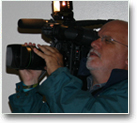 University and Emergency Response Services Complete Largest Planned Simulation Exercise in the History of Trent UniversityFOR IMMEDIATE RELEASE ‘Operation Collaboration’ involves over 160 participants FRIDAY, FEBRUARY 22, 2008, Peterborough Trent University, together with four local emergency response organizations, successfully completed a simulated active shooter exercise today at its Lady Eaton College. The exercise was the largest planned simulation of its kind in the history of Trent University. Planning for ‘Operation Collaboration’ began in 2007 and involved first responders representing the Peterborough and Lakefield Community Police, County of Peterborough Emergency Medical Services (EMS), City of Peterborough Emergency Management Division, and the Peterborough Regional Health Centre. A total of 160 individuals representing emergency personnel, students and employees participated in the half-day exercise. The purpose of the simulation was to evaluate how effectively the University and its emergency response partners interact with each other in a simulated emergency and to test the University’s and first responders’ communication procedures in the event of a critical incident. “As recently as February 14, 2008 university campuses across North America were once again shocked to learn of another shooting on campus,” said Bonnie M. Patterson, President and Vice-Chancellor. “The incident at the University of Northern Illinois, together with reports of similar incidents at other American and Canadian universities in recent years, are stark reminders that universities need to do everything they can to ensure that emergency preparedness on campus is maximized while maintaining an environment that is open and accessible, and welcoming of diverse peoples and opinions.“ The President praised the four emergency response organizations, students and employees for their participation in the simulation. “The active shooter simulation was chosen as the basis for this scenario because it represents a real and continued threat on campuses across North America,” said Patterson. “Through this successful simulation, we have fulfilled our objectives by testing how the University and agencies interact and how they communicate in a time of crisis,” said Patterson. From the exercise, the emergency teams identified opportunities where the various teams can work more closely together including:
“With the successful completion of the exercise, our respective teams will complete their own in-depth debriefings and identify areas where they can make improvements in each organization’s policies and procedures,” said President Patterson. The President stressed that emergency planning and preparedness at Trent remains an on-going priority for the University community. Student groups involved in the exercise planning included the Trent University First Emergency Response Team (TUFERT) and organizers of the National Conference of Campus Emergency Responders, which was coincidently being held at Trent. The timing for this year’s conference allowed some conference delegates to be active participants in the simulation exercise. “On behalf of Trent University, I would like to thank all of the emergency services personnel, students and Trent employees for the leadership they have displayed to plan such an effective simulation,” said Patterson. “We will evaluate the lessons learned and move forward to refine our emergency response procedures and contingency plans.” Background Files: - 30 - For more information contact: |
































